I talk about my dog, Oso, all of the time but he’s not the only critter in our household. I’ve mentioned my turtle, Zorro, a couple of times throughout the course of this blog but today I want to devote an entire post to him. Specifically, I want to talk about a trainer/owner failure: how I accidentally taught him to escape from his tank.
My management failure
A year or two ago I changed Zorro’s setup by building a platform that sat on top of his tank to allow for more water in it. As soon as it was installed, I questioned whether or not he would be able to escape from his new setup. However, instead of doing something preemptively about that, I decided to take the “wait and see” approach.
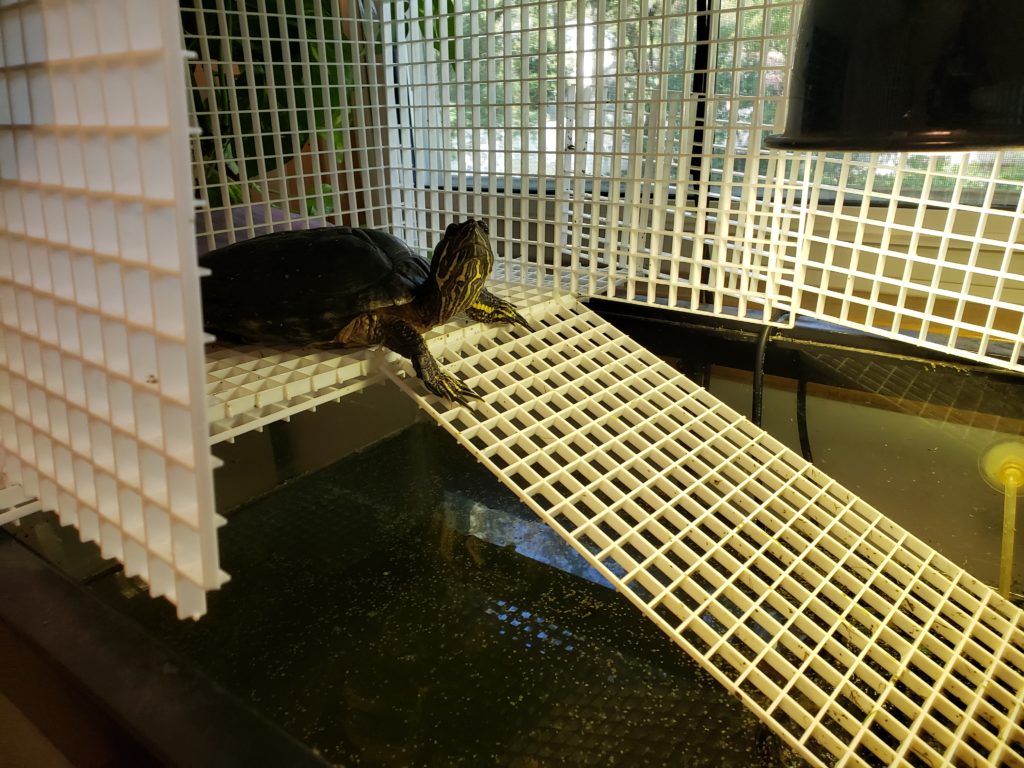
This was mistake number one. Zorro tries to escape whatever enclosure he’s in. This has been true of every enclosure I’ve put him in in the last 12 years I’ve had him. I knew he would try to escape this new setup and I knew that it was more possible than it was with his previous setup. Yet, I still took the wait and see approach, even though I knew better.
Sure enough, it took only a few days for him to start trying to climb out. Luckily, his tank is in my office so I was right there to put him back in. It quickly became clear that I would need to actually have some management solution in place to keep him safe. Instead of developing a great management solution, though, I put up a half-assed management solution. Again, I questioned whether or not it would be effective.
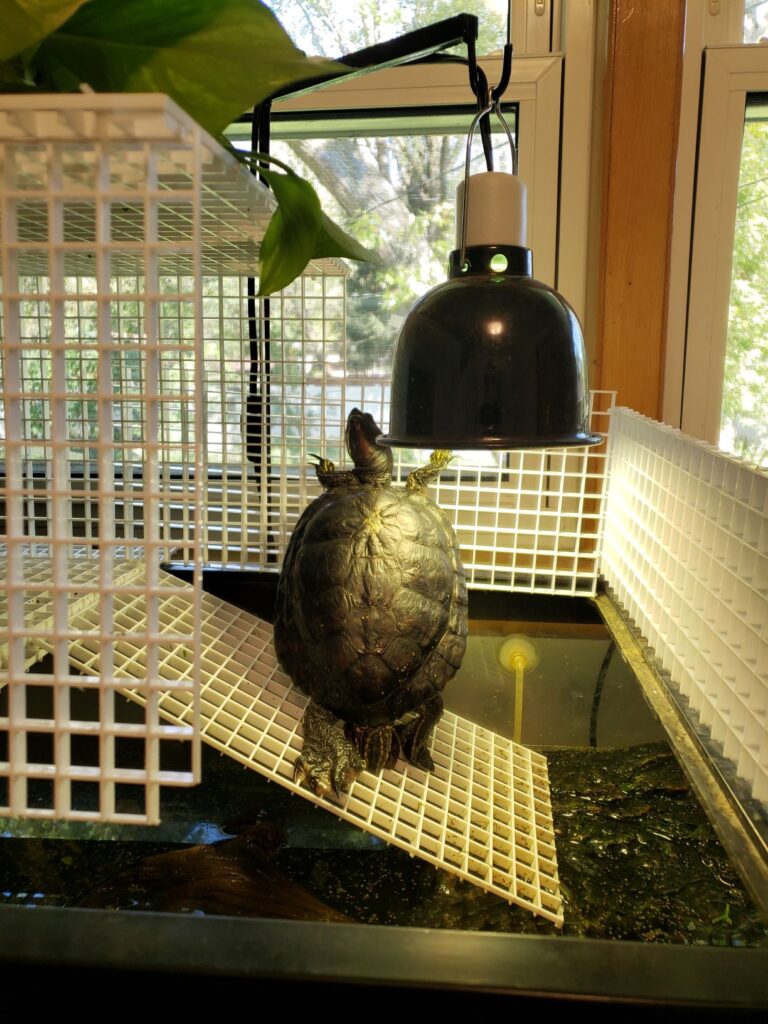
This was mistake number two. Instead of putting a great management solution in place that I knew was going to be effective, I opted for the easiest solution I could think of and I still questioned whether or not it would be effective. Of course that didn’t work and he was able to climb out of his tank. What this did was teach him that if he just pushes the barrier a little harder, then it will work.
Since that didn’t work I reinforced it a little more. I knew it still wasn’t perfect, but it should’ve been much harder for him to escape. However, because I previously [accidentally] taught him that if he pushes against the barrier harder then he’ll be able to escape, he was now able to get out of this more difficult setup, too. Mistake number two came back to bite me and provide mistake number three.
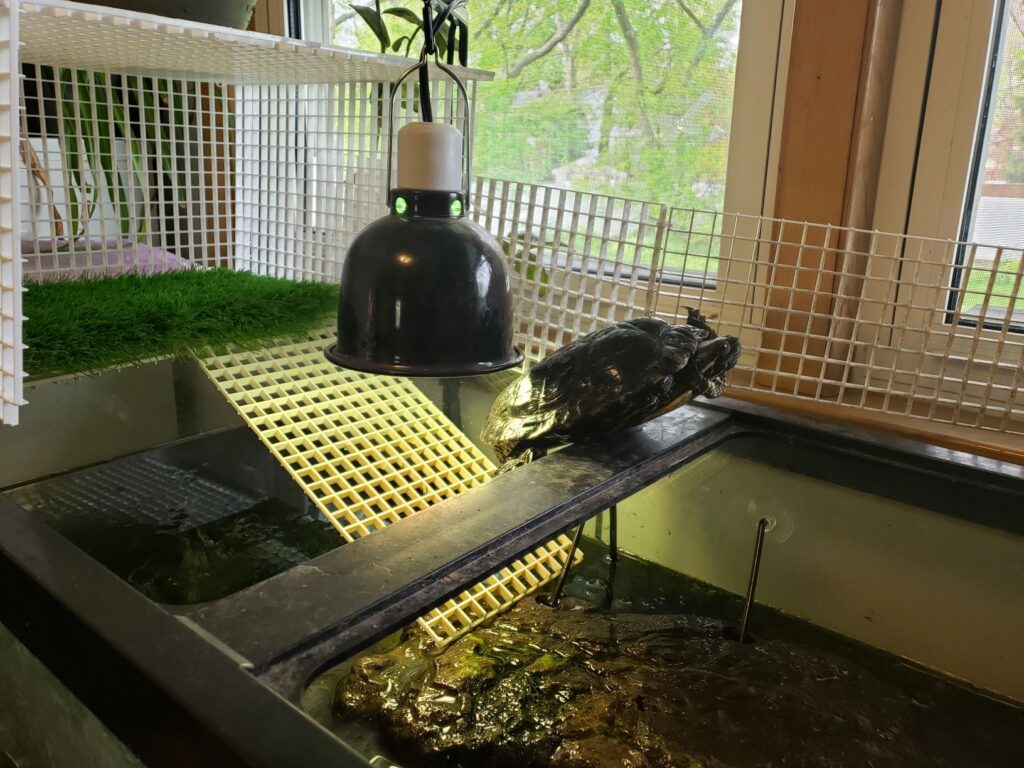
This situation was 100% my fault. I knew Zorro’s past behavior; I knew he’d try to escape this setup and I knew that it was likely possible. Even with all of that knowledge, I still chose to take my chances and feign surprise when what I knew would happen actually happened because it was easier for me to do it that way. I didn’t have to put in the extra effort or forethought by taking the “wait and see” approach. And, because I didn’t do what I should have done the first or even the second time, I taught Zorro to try harder and how to escape more successfully.
The way that I taught him to try harder is through something called “shaping”. Shaping means reinforcing gradual approximations– or baby steps– towards an end goal behavior. This is the technique frequently used for teaching really cool tricks. Below is a quick video example of shaping:
How I used shaping here [albeit without trying] was by setting up gradually more challenging situations for him to succeed at escaping. If I had put a more rigorous management solution in place after the first time Zorro tried to escape, he would have failed and learned that it doesn’t work to try harder. However, because I set up an only slightly more difficult approach he did learn that pushing harder worked and was able to use that knowledge later for the next only slightly more difficult approach.
The right way
This past summer I finally started building the dream enclosure I’ve been thinking about for Zorro for a while. And this time, I decided to do it right when it came to him escaping. When thinking through the design for his enclosure, I took into account all of the ways I could possibly think of for him to escape. I knew I wanted a plexiglass barrier surrounding it for aesthetic reasons, but decided to make the barrier taller so it wouldn’t be possible for him to reach the top and pull himself up and out. Anything that’s tall enough for him to climb on to then climb out is against a wall. We anchored the back walls so he can’t move the barrier off and slip under.
When the top and barrier finally went up and he was able to move around, we reassessed our management strategy to make sure what we assumed and expected to happen were accurate. While watching him and testing the barrier for ourselves, we decided there might be one more possible way for escape: if he pushed it hard enough could he break the adhesive holding the sides together or bow out the plexiglass enough to slip out? Instead of taking our chances, we grabbed a few brackets so that even if he pushed he wouldn’t be able to bow or break the sides. We’re a few weeks in and he’s tried to escape as he always does. This time, though, he’s been unsuccessful and his attempts are dwindling.
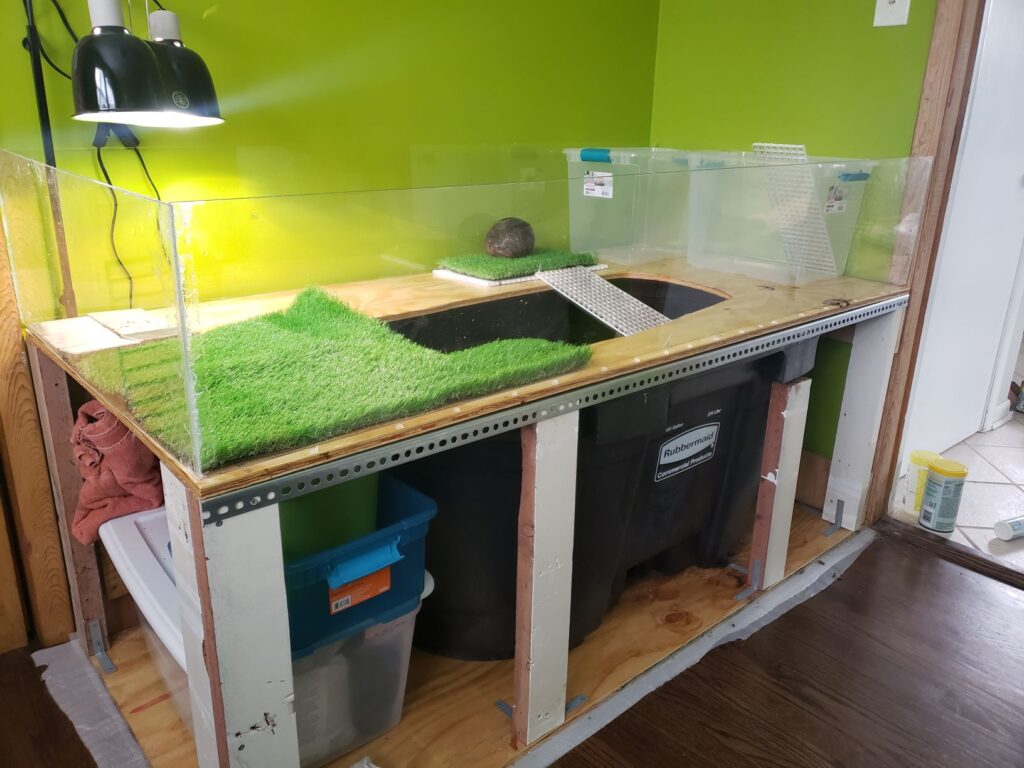
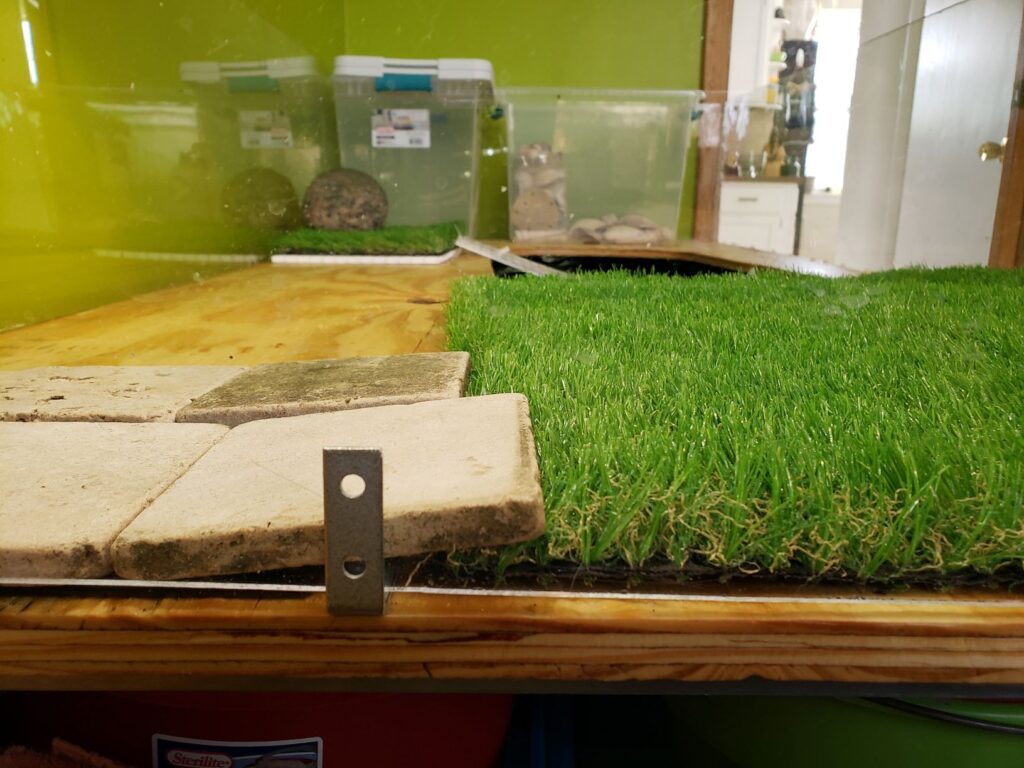
How does this relate? A dog counter surfing example
The reason I wanted to tell this story is because I often see pet parents go through this same process of taking a half-hearted approach to management and inadvertently shaping their pet to be better at foiling those management attempts.
One behavior that I frequently see this happening with is counter surfing. Dogs are opportunistic scavengers. They are made to search for food and eat it when opportunity strikes. It’s what they do. Even though we know that, many people still opt for the “wait and see” approach when bringing home a new dog, just like I did at first with Zorro’s new platform. The “wait and see” approach here is to leave food out on the counter (even if it’s in a bag) and leave the dog unattended in the room.
When that doesn’t work, many people will opt for pushing the food back on the counter so it’s harder to access but will still leave them unattended with the food on the counter. This is the part where we inadvertently train our dogs that if they try harder, they can still access the food.
When that doesn’t work some people opt for the sink but will continue to leave them unattended. Again, we usually end up inadvertently shaping our dogs that they can still access the food if they try harder.
A more solid management solution to start with instead is to leave no food on the counters when the dog is unattended and if you do need to leave the kitchen while you’re cooking (when it’s difficult to put food away) to then keep the dog out of the kitchen using baby gates, doors, etc. It’s much harder to counter surf when you’re not in the kitchen when food is on the counters.
Now what?
- Think through your pet’s current behavior and learning history. Is there a behavior you’ve been trying to manage but are instead inadvertently shaping your pet to foil your attempts?
- Think about a management solution that would make it so your pet couldn’t perform that behavior. Chances are you may have already heard of the management solution but maybe thought it was too cumbersome (like I did with Zorro’s platform!) Is there a way to make it less cumbersome or easier to enact?
- Enact your management solution and start breathing easier!
- If you’re having trouble coming up with a management solution, email us at [email protected] to schedule a session or check out our Setting Yourself Up for Success: Behavior Modification Basics course.
Happy training!
Allie
